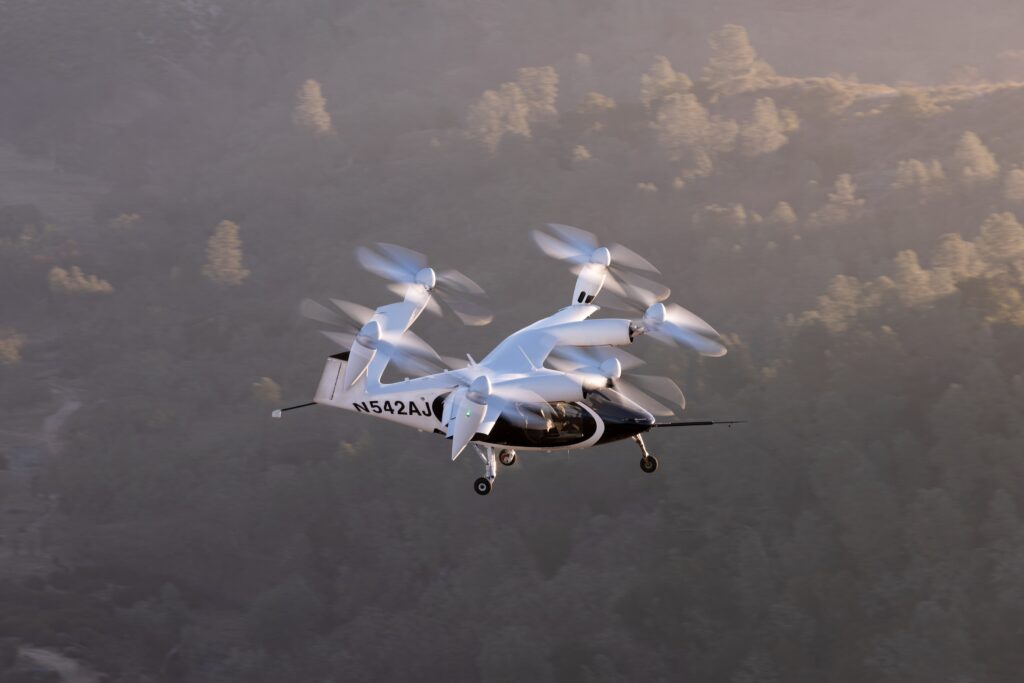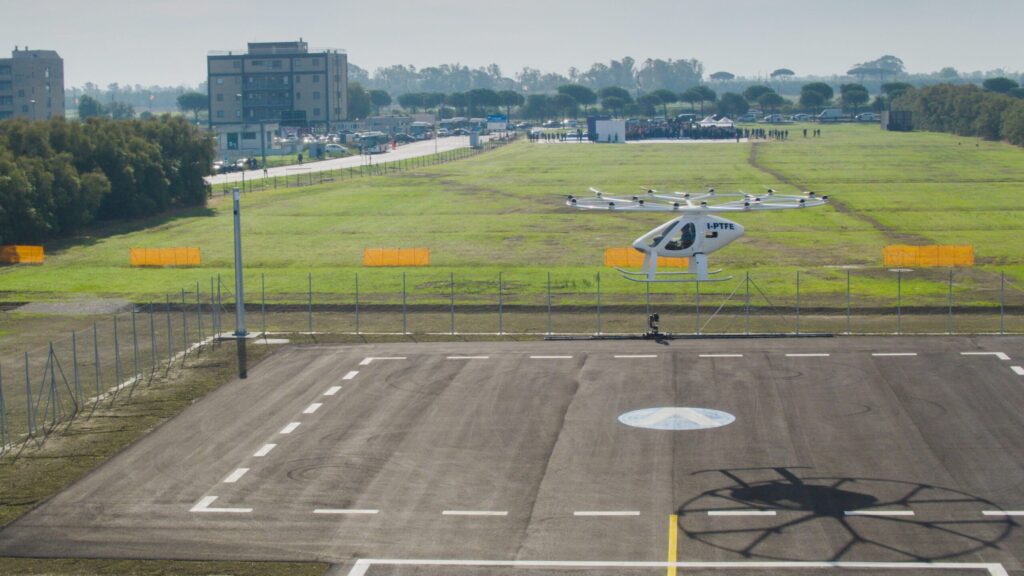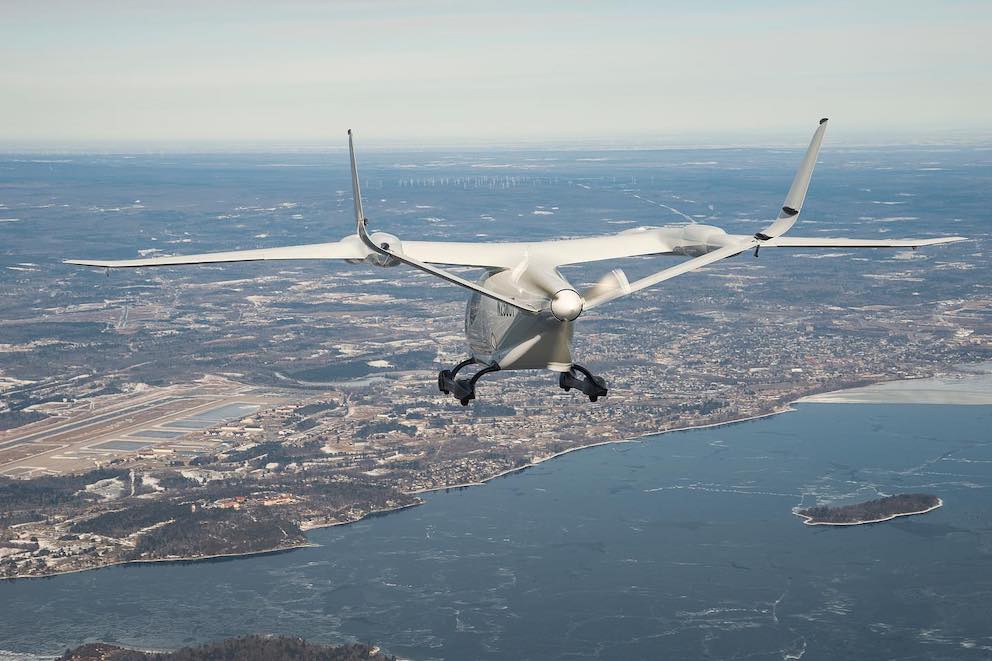Small, quiet and safe electric-powered aircraft are at the centre of the emergence of the future industry destined to spread across all metropolises
Flying taxis are imminent, and their arrival will, in time, bring about a revolution in urban air mobility on the ground. After all, these devices, halfway between helicopters, planes and drones, were conceived out of the need to relieve congestion in metropolises and ease traffic congestion. They are closer than people think and ready to disprove the sceptics who have been branding the solution as impossible since the beginning. Exploiting the highways of the skies is a solution that large airlines, startups created for the purpose, and many other large companies (from automotive to hi-tech) are looking at, injecting capital into futuristic but concrete projects, even though in the end, many will be failures and few will be new ventures.
To get an idea, however, it is enough to know that the Vertical Flight Society brings together almost 700 operators of advanced air mobility, defined by Nasa as “an air transport system that moves people and goods between places previously unserved or poorly served by aviation – locally, regionally, intra-regionally, and in urban areas – using revolutionary new aircraft”.
The useful ranking
The emergence of a new category of aircraft entails the development of a complex ecosystem, which must combine the means of transport with the infrastructure, operators and rules to operate safely. It means it will be years before we see the large-scale spread of flying taxis. But not as many years as previously thought. The high interest and duty to find alternative routes to population growth in large metropolises have speeded up the investment and development of the technology. Logical, therefore, that the first step in the chain concerns mainly aircraft.
A valuable and effective resource to get an overview of the industry in the making is the AAM Reality Index (ARI), the ranking devised by Smg Consulting to assess the realistic likelihood of various projects being developed. Using public information and analysis by industry experts, operators are judged based on funding received, technical characteristics of the aircraft, readiness for large-scale production, certifications obtained and the team leading the development.
Wisk Aero
Among the most highly-rated startups is Wisk Aero, a joint venture between Boeing and Kitty Hawk (one of the companies financed by Larry Page, who announced in recent weeks that he was halting operations), which has just shown the sixth prototype of its flying taxi. It is an electric eVTOL, i.e. vertical take-off and landing aircraft, equipped with 12 propellers capable of flying without a pilot, which can accommodate four people (including the disabled, thanks to the design of a cabin that makes it easier for them to get on board).
It can travel at a speed of 220 km/h at an altitude of 750 to 1,200 metres, with a range of 140 kilometres, and, compared to its predecessors, it is the first for which the company is aiming to obtain certification from the US Federal Aviation Administration to carry out tests with passengers on board. The startup has so far received $775 million from Boeing and other investors, but there still needs to be a set a date for the start of operations.
Ehang
In a scenario in which American and German startups prevail, for the time being, China could not miss out, which, thanks to Ehang, is starting to bring the flying taxi to Europe as well. To do so, the company has agreed with Spain, where it has recently completed some demonstration flights of the EH216 air taxi. The autonomously piloted electric aircraft, which flies at low altitude with a maximum speed of 130 km/h, a maximum load of 220 kg and a range of 35 kilometres (it recharges in two hours), passed the tests carried out at a Galician research centre of the Spanish National Institute of Aerospace Technology. As proof of the quality of the operation, the same aircraft will become part of the Spanish national police’s fleet of aircraft, which will use for security and emergency missions.
Beta Technologies
Further ahead is Beta Technologies has raised almost $800 million for its Alia, with Amazon and the US Department of Defence on the list of investors. The company, founded by Jeff Bezos, hopes to use it in the future to speed up the shipping of packages. At the same time, the US military has already conducted tests with the electric flying taxi and aims to exploit it for the movement of men and equipment. The approximately 400 kilometres of autonomy, space for five people in addition to the pilot or six cubic metres of materials (in the passenger or cargo version), and recharging of the five lithium-ion battery packs in less than an hour are the strong points of Alia, equipped with rotors to take off and land vertically, capable of travelling at 280 km/h and with the goal of launching the first commercial flight by 2024.
This is a complex goal to achieve due to air regulations yet to be established and safety tests to be repeated, although Beta Technologies has plans that go beyond Alia. To prepare for the large-scale deployment of electric aircraft, the American startup (based in Burlington, Vermont) is building a network of charging stations to facilitate travel and speed up air taxi operations. Currently, the network stretches across Vermont, Ohio, New York and Arkansas, with nine charging stations at seven airports.
The company’s road map is to grow to 15 charging stations within the next few months, and to reach 50 by next year, to offer a network across the entire eastern part of the United States. Unlike almost all companies that develop their ecosystem, Beta Technologies aims to provide a network of charging points open to everyone because the mission is to reduce the amount of carbon released into the atmosphere as much as possible. For this, the goal is to create a multimodal network with chargers for aircraft and electric vehicles so that any vehicle dedicated to transporting goods can be recharged.





Volocopter
The two most advanced projects with the most significant potential to turn potential into an industrial reality are Volocopter and Joby Aviation. In our ranking, they occupy the top two places, representing the most advanced solutions in Europe and the United States. Founded in 2011 by Stephan Wolf and Alexander Zosel, Volocopter made its first demonstration flight in October of that year and began attracting interest in a short time.
The startup’s growth has been steady and now has more than 500 employees, an aircraft currently in its third generation with more than 1,500 test flights to fine-tune its air taxi, and a series of strategic agreements aimed at burning the candle at the seams to turn a great ambition into reality. The first breakthrough came in 2019 with Geely, the parent company of Volvo and Lotus, leading a $55 million funding round. Last March, a further $170 million was raised as investors expanded: a long list that included Intel, Mercedes-Benz and German railway company Deutsche Bahn.
A few weeks ago, an experimental flight at Fiumicino inaugurated advanced air mobility in Italy. The vehicle is called Volocity, is equipped with 18 motors powered by lithium-ion batteries, has a range of 35 kilometres and travels at 110 km/h, carrying two or four people (including the pilot), as well as a cargo version for goods. It recently completed its first manned flight in Paris, a city where the German company aims to debut its aircraft for the Olympics scheduled for the summer of 2024. The aim is to launch the first services in 2024, to connect the centre of Rome with the city’s main airport in 20 minutes, thus preparing for the Jubilee of 2025, which will draw even more tourists than usual to the city.
“This is an electric taxi that is safer, quieter, cheaper and more sustainable than a helicopter,” said Marco Troncone, CEO of Aeroporti di Roma, the company that manages Rome’s two airports, Fiumicino and Ciampino. It will take time to obtain the necessary certifications to authorise flight operations from the European Aviation Safety Agency, the National Board for Flight Assistance and the National Civil Aviation Authority, just as it will take time and resources to create the vertiport, the facilities dedicated to the take-off and landing of eVtols. However, the signs coming from Italy give hope for future developments.
Joby Aviation
At the top of the list compiled by Smg Consulting is Joby Aviation, which is ahead of all others and above all because of the funds it has at its disposal: $1.9 billion, almost four times what Volocopter has obtained so far. Founded by JoeBen Bevirt, whose parents brought up on a ranch in northern California under the banner of the freedoms of the Hippie community, the startup has, in recent months, obtained an initial certification from the Federal Aviation Administration (the agency that regulates US civil aviation) to test the Joby S4, the electric eVtol aircraft equipped with six motors, capable of flying 240 kilometres on a single charge and touching 320 km/h, carrying four people in addition to the pilot.
Joby’s journey has, however, also been marred by mistakes, such as the crash of a remotely piloted prototype last February. The great interest and money behind the project come from the many well-known names that have bet on the startup: there is Pinterest co-founder Paul Sciarra, Zynga founder Mark Pincus, LinkedIn co-founder Reid Hoffman, billionaire Jeff Skoll, as well as Intel and Toyota. The Japanese car giant has invested $394 million in Joby Aviation, providing technology and engineers. Among the latest big names to support the startup is Delta Airlines, which is banking on electric aircraft to make it easier and faster for passengers to travel to and from major US airports.



